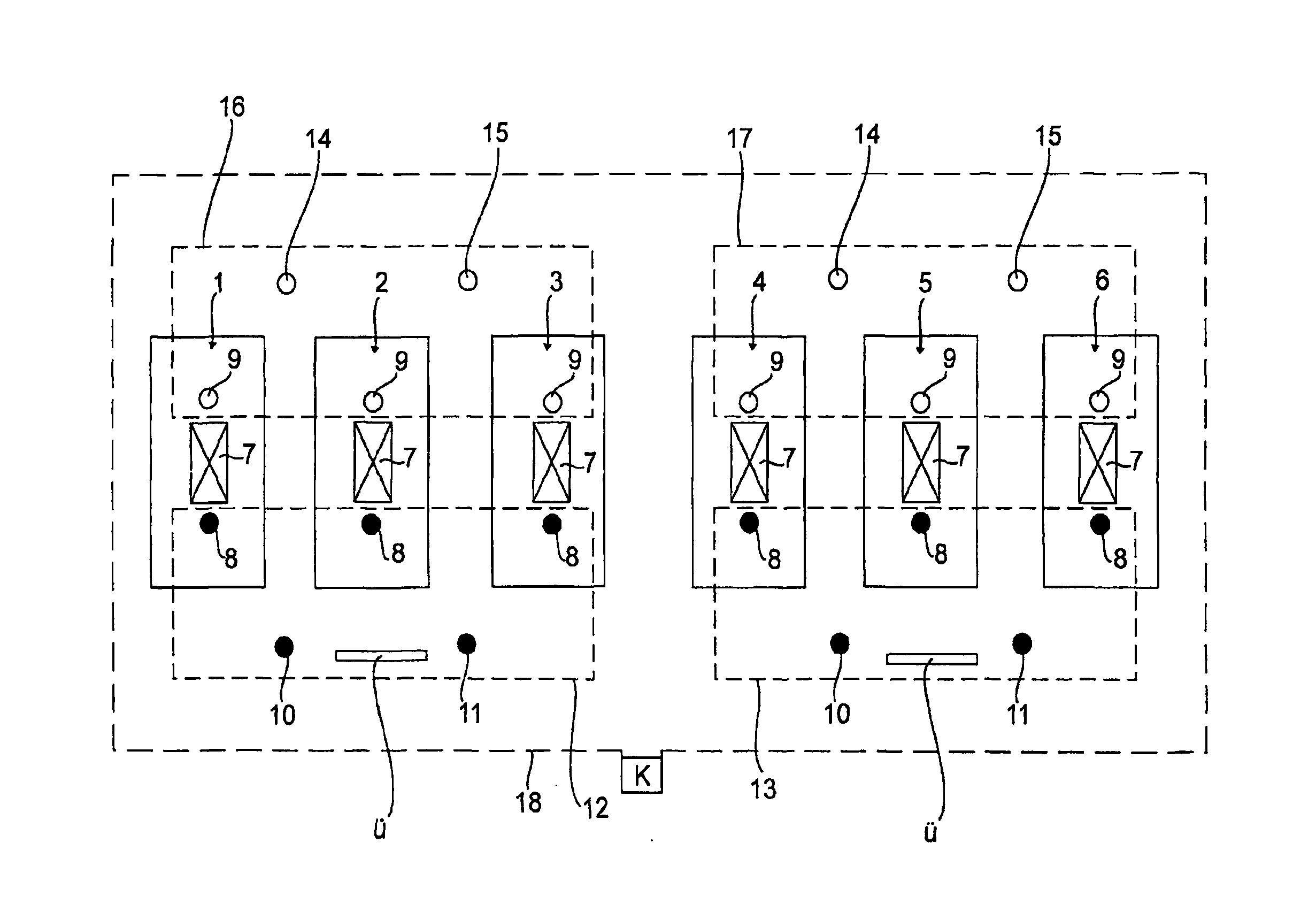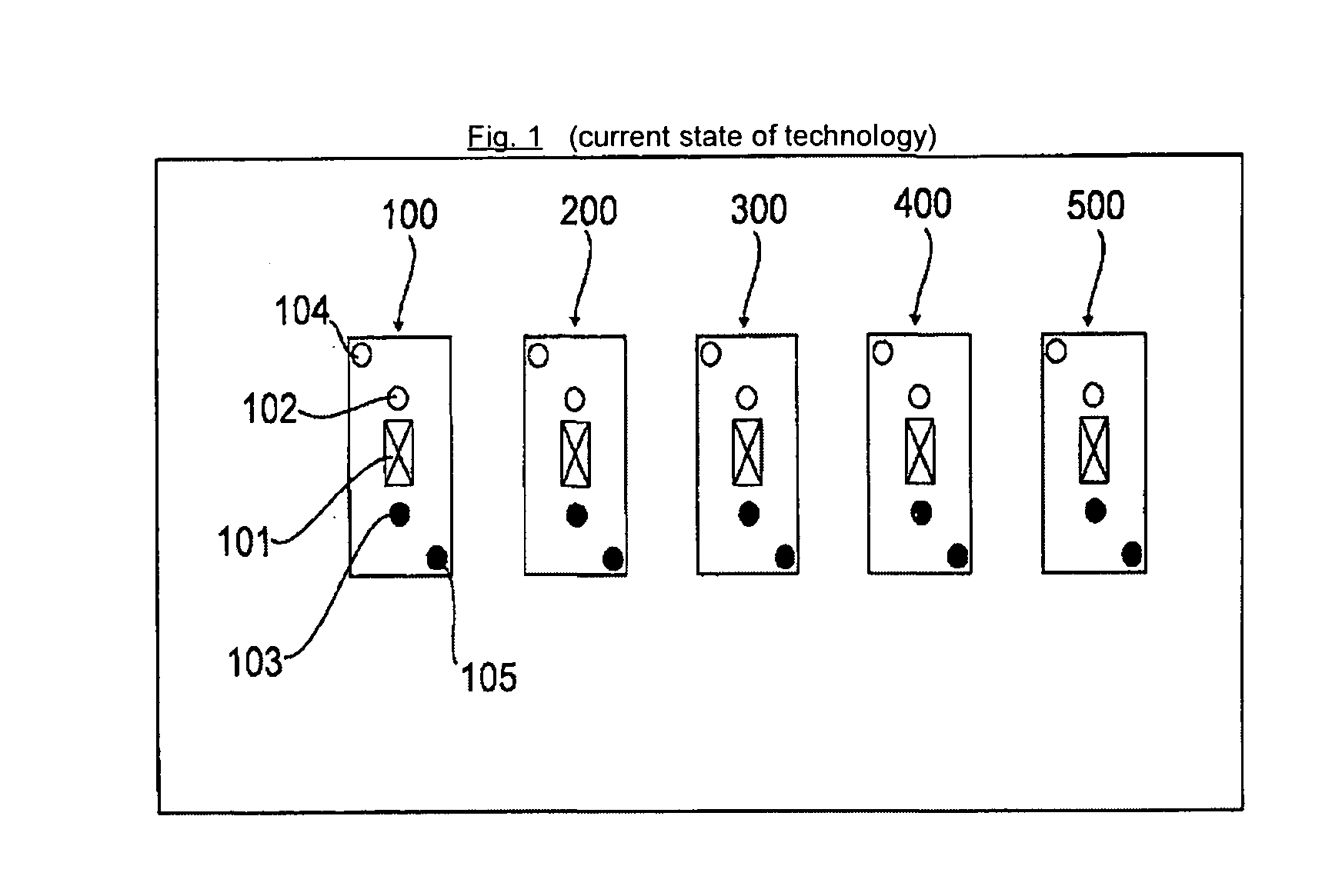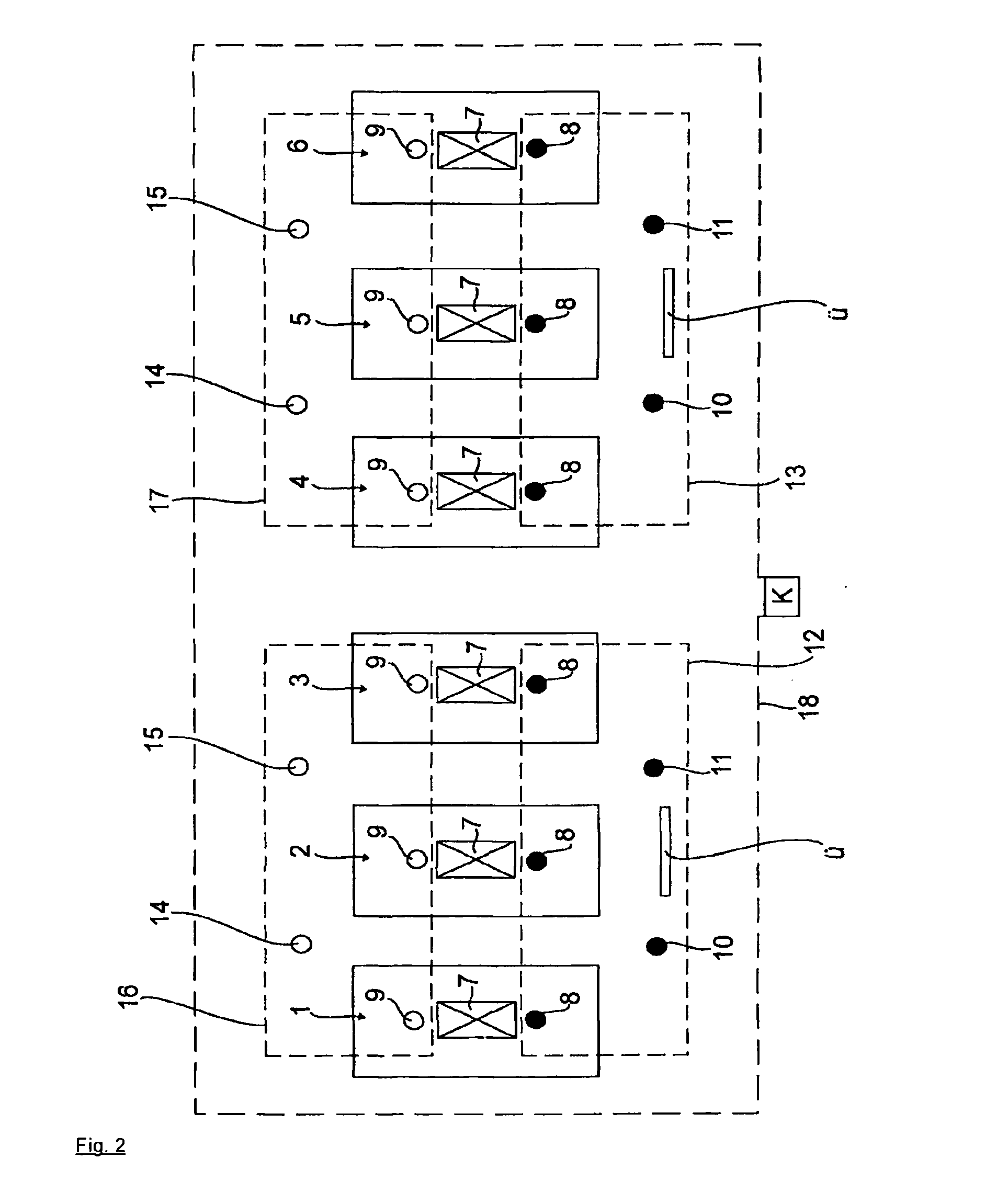Device for coordinating patient care in hospitals, nursing homes, doctors offices or the like and method for operating such a device
a technology doctors' offices, which is applied in the field of devices for coordinating patient care in hospitals, nursing homes, doctors' offices, etc., can solve the problems of high supply cost, low utilization rate of support devices, and high cost, so as to reduce reduce the operating cost of patient care. , the effect of reducing the number of care station support units
- Summary
- Abstract
- Description
- Claims
- Application Information
AI Technical Summary
Benefits of technology
Problems solved by technology
Method used
Image
Examples
Embodiment Construction
[0031]FIG. 2 shows a schematic example of a configuration of six operating theaters 1 to 6 in a hospital, whereby each operating theater, as explained using the example of operating theater 1, is associated with a stationary operating table 7, which in turn is associated with a stationary anesthesia station 8 as well as a stationary surgery care station 9, which is shown here as an example as forming two functionally different (anesthesia, surgery) stationary medical care stations.
[0032]As derived from the schematic representation in FIG. 2, the three functionally similar anesthesia care stations 8 in operating theaters 1 to 3 form, together with the two associated anesthesia support units 10, 11 associated with operating theaters 1 to 3 and shown here as examples, a so-called anesthesia care group 12, which is expressed with the dotted enclosure of the individual care stations and support units. Analogously, the anesthesia care stations 8 of operating rooms 4 through 6, together wi...
PUM
 Login to View More
Login to View More Abstract
Description
Claims
Application Information
 Login to View More
Login to View More - R&D
- Intellectual Property
- Life Sciences
- Materials
- Tech Scout
- Unparalleled Data Quality
- Higher Quality Content
- 60% Fewer Hallucinations
Browse by: Latest US Patents, China's latest patents, Technical Efficacy Thesaurus, Application Domain, Technology Topic, Popular Technical Reports.
© 2025 PatSnap. All rights reserved.Legal|Privacy policy|Modern Slavery Act Transparency Statement|Sitemap|About US| Contact US: help@patsnap.com



